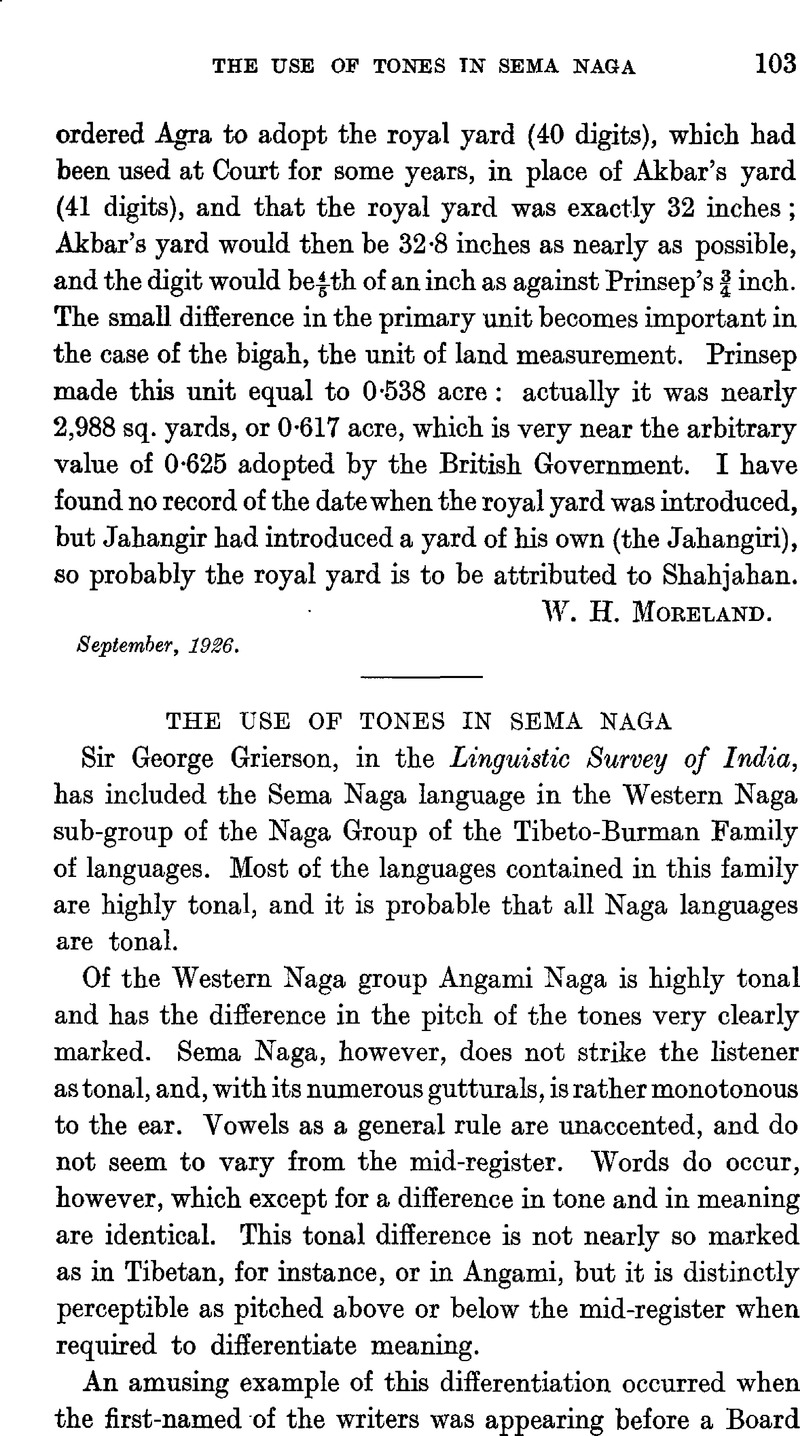No CrossRef data available.
Article contents
The Use of Tones in Sema Naga
Published online by Cambridge University Press: 15 March 2011
Abstract

- Type
- Miscellaneous Communications
- Information
- Copyright
- Copyright © The Royal Asiatic Society 1927
References
page 104 note 1 On the Bepresentation of Tones in Oriental Languages.
page 106 note 1 In this last instance apu-ku= “hoe” is given a more decidedly low register than apu-ku= “leg”, while the two first of the four are generally not apuku but akupu, the latter being the correct form, only the Sema is incorrigible in the matter of changing about the syllables of which his agglutinative word is composed, so that one hears piketimi for kepitimi (= “male”), tikila for kitila (= “little”), and so on indiscriminately, and often from the same mouth. In fact it is easier for him to give the words different tones to avoid confusion, than to suppress his tendency to interchange the syllables of any word in which an identical, or nearly identical, vowel sound is repeated with different consonants.
page 106 note 2 So also perhaps api = “oak”, since its acorn (api-ti) is in the Kaga Hills almost entirely clothed in its woolly cup.
page 107 note 1 See The Sema Nagas, pp. 169, 170.
page 107 note 2 This has already been pointed out by way of contrast to the readiness with which the Angami Naga coins new words for new objects (Hutton, , The Angami Nagas, p. 295)Google Scholar.
page 108 note 1 Hutton, , The Sema Nagas, p. 296Google Scholar.
page 108 note 2 Grierson, , Linguistic Survey of India, vol. iii, pt. ii, p. 207Google Scholar.




